Creating a kids’ room that is both functional and fun can be a challenge, especially when trying to balance their personality with a minimalist approach. This blog will explore 19 innovative kids’ room ideas that offer a perfect blend of style, practicality, and creativity. These ideas will cater to minimalist design enthusiasts, parents with small apartments, or those who simply prefer simple, clean, and easy-to-maintain spaces. From clever storage solutions to fun decor ideas, we’ve got you covered!
1. Bright & Playful Color Palettes
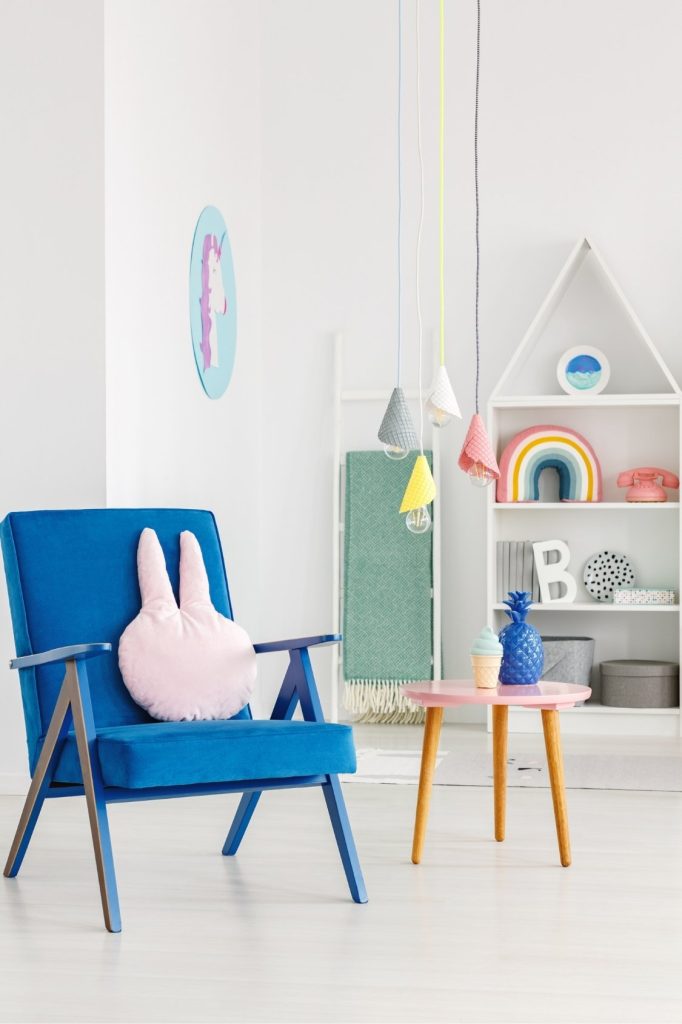
A well-thought-out color palette can transform the mood of any room, and the kids’ room is no exception. Bright, cheerful colors can stimulate creativity, while lighter tones can provide a calm space for rest and relaxation.
- Pro Tip: Use soft pastels or whites for the walls to create an open, airy feeling. Pair these with vibrant furniture and accessories for pops of color that catch the eye.
- Expert Thought: When choosing wall colors, think of what appeals to your child’s personality and preferences. If they love adventure, try sky blues and leafy greens; if they’re into calm and soothing environments, opt for soft lilacs or light greens.
- Placement Tip: Consider using an accent wall with a bold color or playful wallpaper design. This draws attention to one side of the room and allows the rest of the space to remain calm and spacious.
- DIY Option: Add chalkboard paint to one wall to create a space where your child can express their creativity—this also makes cleaning easier than regular chalk!
2. Bunk Beds for Space Optimization
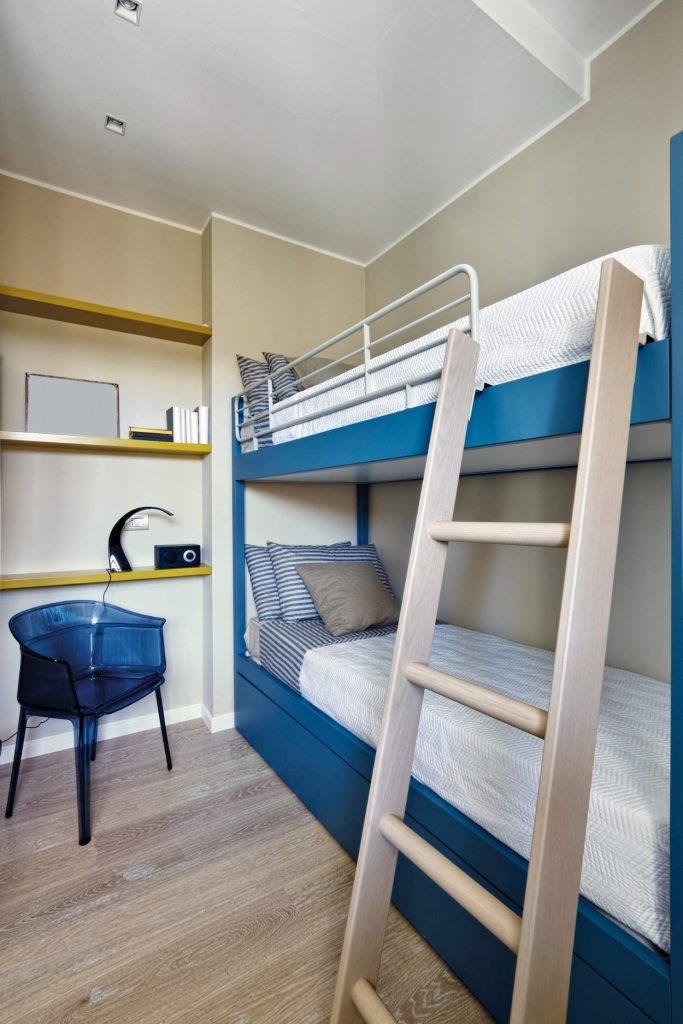
Bunk beds are a timeless and practical solution for kids’ rooms, especially when you need to save space or have multiple kids sharing a room. These beds are great for creating a sense of fun while maximizing available floor space.
- Pro Tip: When selecting a bunk bed, ensure that it’s durable and designed with safety in mind. Look for designs with secure ladders, guard rails, and a solid frame.
- Expert Thought: Bunk beds are not only great for space-saving but also provide a great opportunity to customize the room. You can add shelves, lighting, and even create fun themes like a treehouse or a pirate ship.
- Placement Tip: Position the bunk bed against a wall to free up the center of the room for play areas. This allows easy access to the bed and creates a cozy corner for reading or games.
- Framing Tip: If the room is small, consider a loft-style bunk that frees up more floor space underneath for a desk or play area.
3. Fun and Functional Storage Solutions
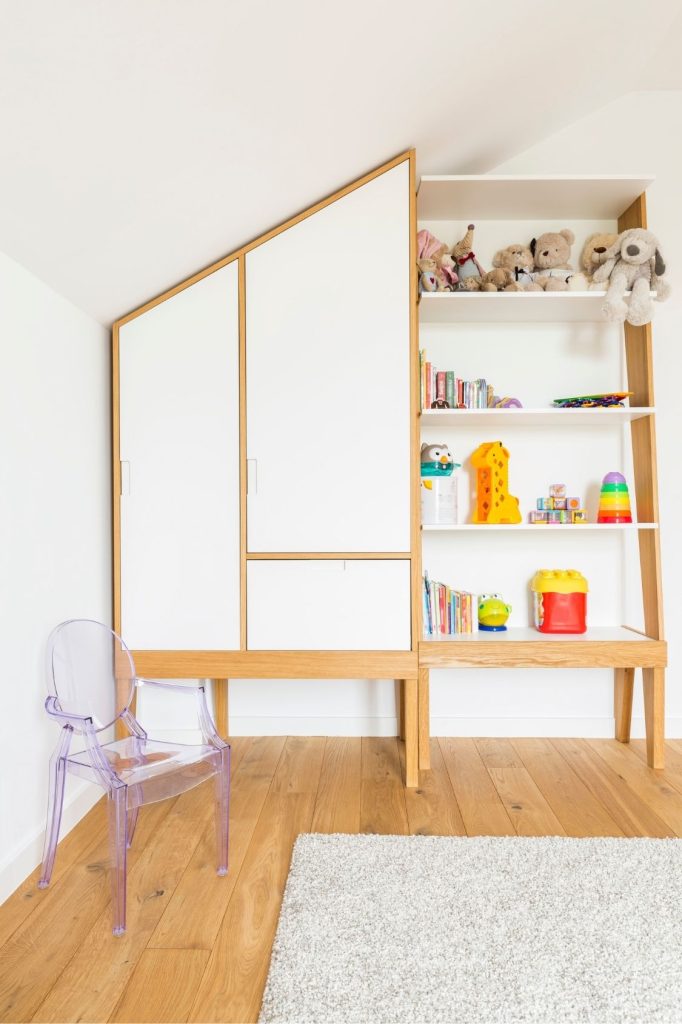
Kids tend to accumulate toys, books, and other items that can make the room feel cluttered. Smart storage solutions are essential to maintaining a minimalist vibe while keeping everything organized.
- Pro Tip: Utilize storage bins, baskets, and built-in shelving to keep toys, clothes, and books out of sight. Choose storage solutions that are easy for kids to access so they can clean up after themselves.
- Expert Thought: Open shelving is great for displaying toys and favorite items, but be mindful to keep it organized. Consider decorative boxes or baskets to hide smaller, less visually appealing items.
- Placement Tip: Install shelves above the bed or desk to keep the floor space clear. This helps create an open environment that feels spacious, even in small rooms.
- DIY Option: Transform old crates into stylish storage units by painting them in fun colors. Stack them on the floor or mount them on the wall for a creative, functional storage solution.
4. Themed Play Zones
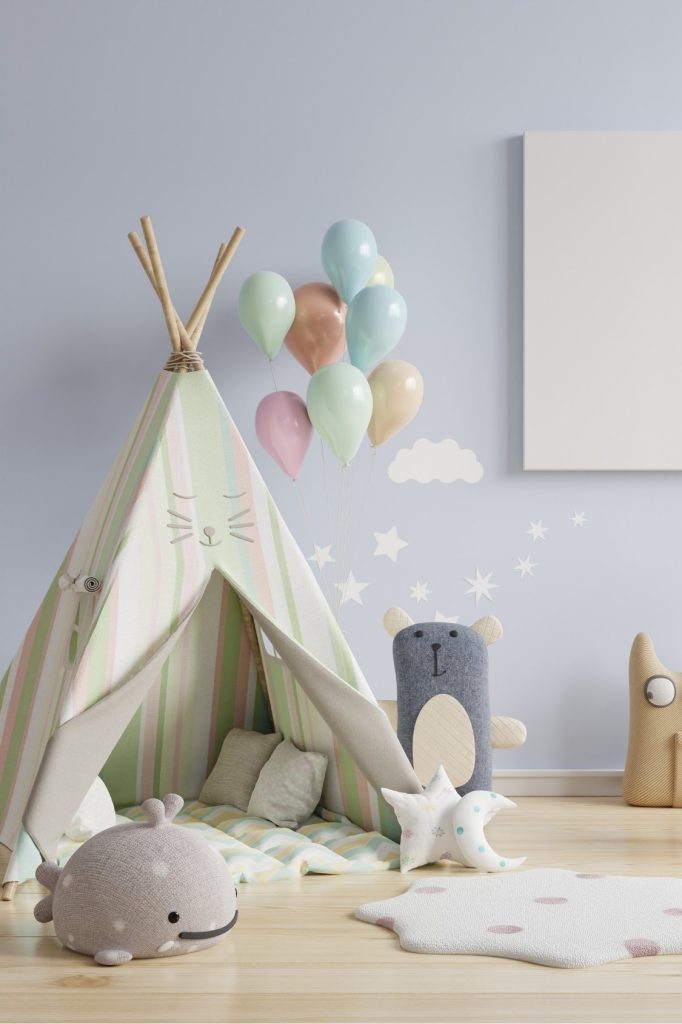
Creating themed play areas in the kids’ room can help enhance imagination and creativity. Whether it’s a reading nook, a creative arts corner, or a mini indoor playground, these areas provide kids with designated spaces to unwind or focus on a specific activity.
- Pro Tip: Choose a specific theme for each zone to make it feel like its own mini-world. For example, a reading nook can have cozy cushions and soft lighting, while an arts corner can be filled with shelves for supplies and a chalkboard wall for drawing.
- Framing Tip: Use colorful rugs or mats to define the area, making it distinct from the rest of the room. It adds a sense of separation and makes the space feel organized.
- DIY Option: Create a fort-like atmosphere with sheer curtains or a canopy to give your child their own private area to relax or play.
5. Multi-Functional Furniture
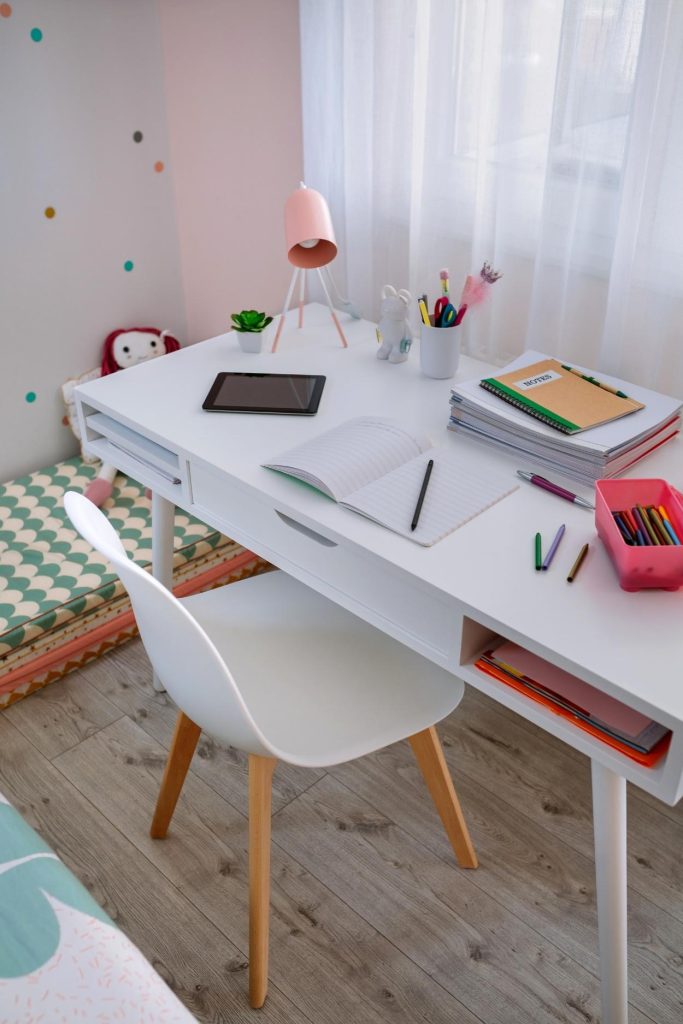
For small kids’ rooms, multi-functional furniture is a lifesaver. Items that combine seating, sleeping, and storage can help make the most out of the limited space while maintaining a sleek design.
- Pro Tip: Look for furniture pieces that serve multiple purposes, such as a bed with drawers for storage, or a desk that can also double as a play area.
- Expert Thought: Adjustable furniture, such as a folding chair or a modular sofa, can easily be moved to accommodate different activities, providing flexibility in how the room is used.
- Placement Tip: Keep larger pieces, like beds or desks, against the walls to create more space in the center of the room for activities and play.
- DIY Option: Repurpose old furniture into something new. For example, turn a dresser into a play kitchen or use a sturdy bookshelf as a base for a playhouse.
6. Playful Wall Art and Murals
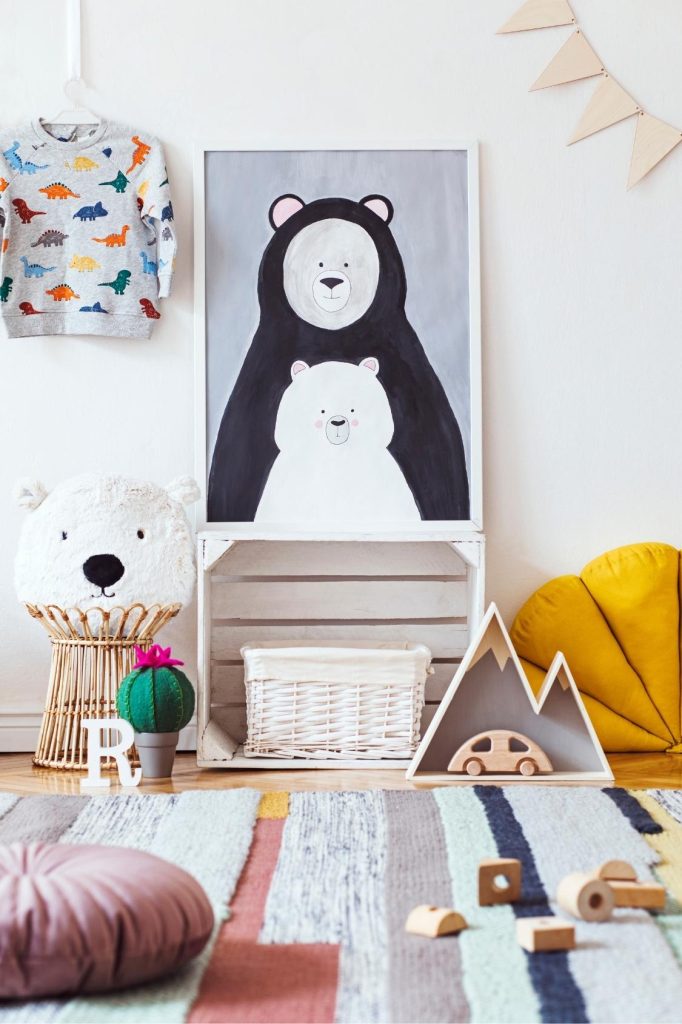
Adding artwork to the walls can make the room feel more personal and engaging for children. From simple framed prints to large-scale murals, wall art can make a big impact without overwhelming the space.
- Pro Tip: Use framed prints or canvas art to add personality to the room. Choose art that speaks to your child’s interests, such as animals, space, or their favorite cartoon characters.
- Expert Thought: Murals or decals can create a whimsical atmosphere and are easy to remove when your child’s tastes change over time.
- Placement Tip: Hang art at eye level for your child to enjoy, but make sure to secure frames well to avoid accidents.
- DIY Option: Paint your own wall mural! It doesn’t have to be elaborate—simple shapes, animals, or nature scenes can add charm to the room.
7. Cozy, Minimalist Bedding
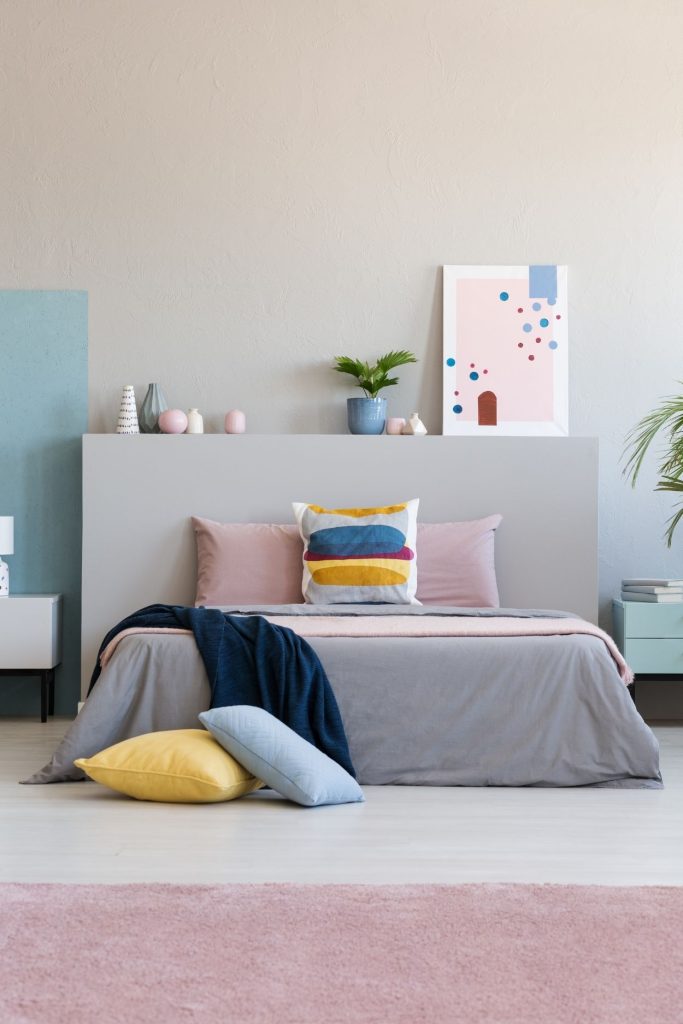
Choosing the right bedding is key in maintaining a minimalist design while ensuring comfort. Opt for simple, neutral bedding with a few fun accessories like throw pillows or plush toys for added interest.
- Pro Tip: Stick to neutral or pastel-colored bedding that complements the room’s overall design. Layer with a colorful throw blanket or patterned pillows to add visual interest without overloading the space.
- Expert Thought: Go for natural, breathable fabrics like cotton or linen to keep your child comfortable and ensure the bedding lasts longer.
- Placement Tip: Keep the bed against the wall or in a corner to free up more space for play areas.
- DIY Option: Make your own bedding sets with fabric you love, or update plain bedding with fabric paint to create a custom look.
8. Customizable Furniture for Growing Kids
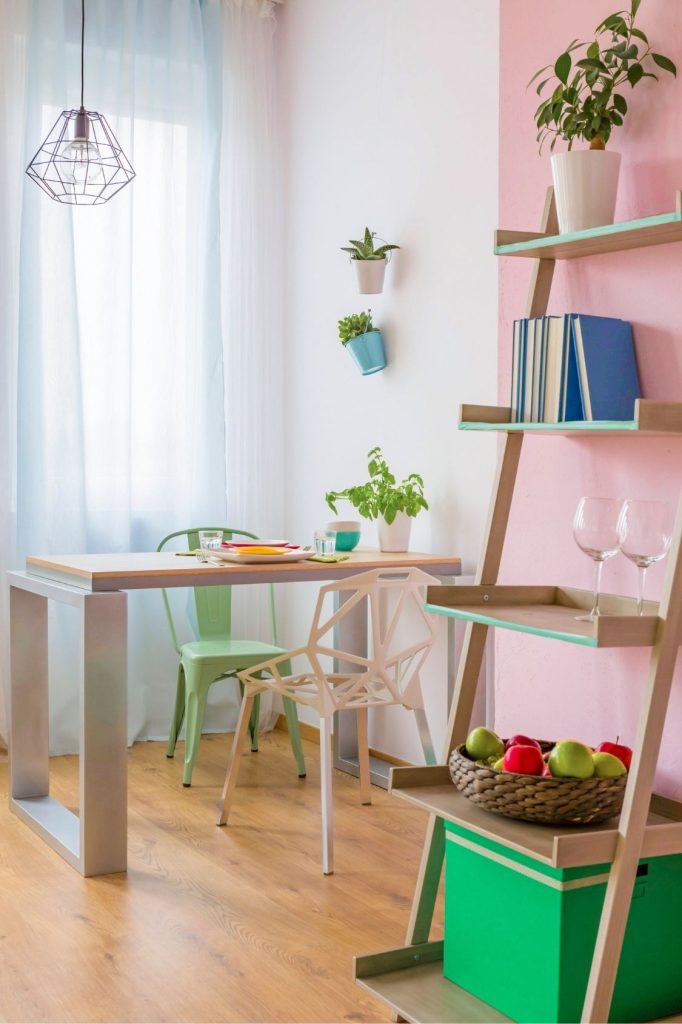
As kids grow, their needs and preferences change. Customizable furniture allows you to adapt the room as they get older, ensuring it remains functional and stylish for years to come.
- Pro Tip: Choose adjustable pieces like a growing desk or convertible bed to make sure the furniture grows with your child.
- Expert Thought: Invest in modular furniture that can be reconfigured as needed, such as a modular shelving unit or sofa with interchangeable parts.
- Placement Tip: Arrange modular pieces in a way that allows for easy rearrangement as the child’s needs evolve.
- DIY Option: Build your own modular units using wood and screws, allowing for easy adjustments and additions as needed.
9. Hanging Storage and Play Spaces
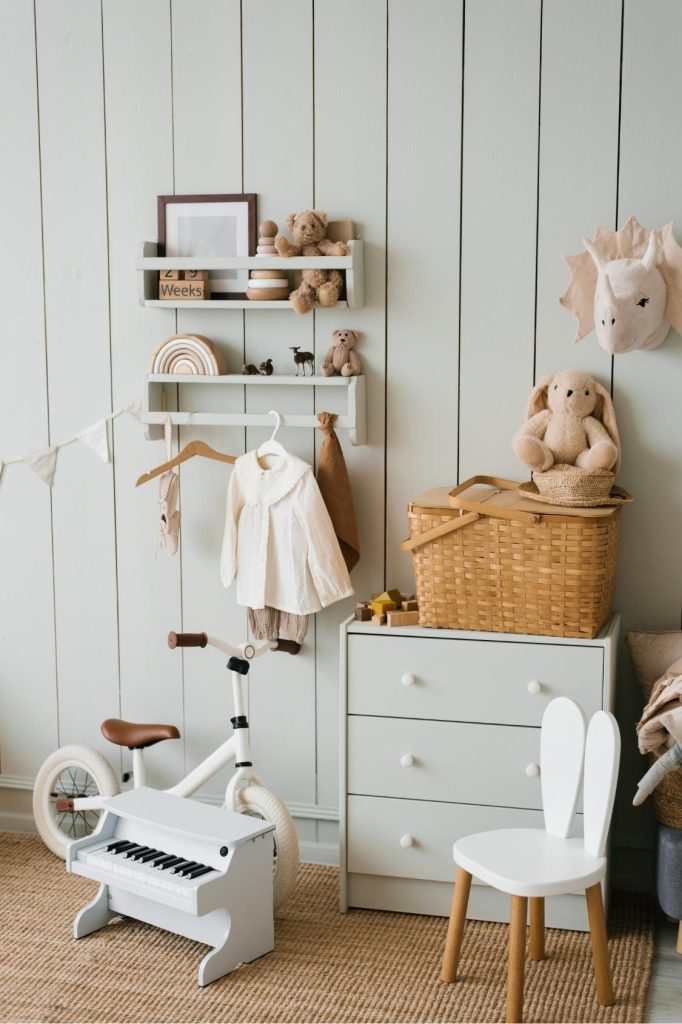
Maximize floor space and keep the room tidy with hanging storage solutions. Not only does this free up space, but it also adds an element of fun for the kids.
- Pro Tip: Hang baskets, hooks, or small shelves from the ceiling to store toys, books, or clothing. This adds a whimsical touch to the room and keeps everything organized.
- Expert Thought: Hanging storage can double as decor. Use colorful woven baskets or stylish fabric bags to create a playful, eye-catching look.
- Placement Tip: Hang storage near the bed or play area, where your child can easily access it without it taking up precious floor space.
- DIY Option: Create your own hanging organizer using repurposed materials like old fabric or rope to make unique storage solutions.
10. Interactive Wall Features
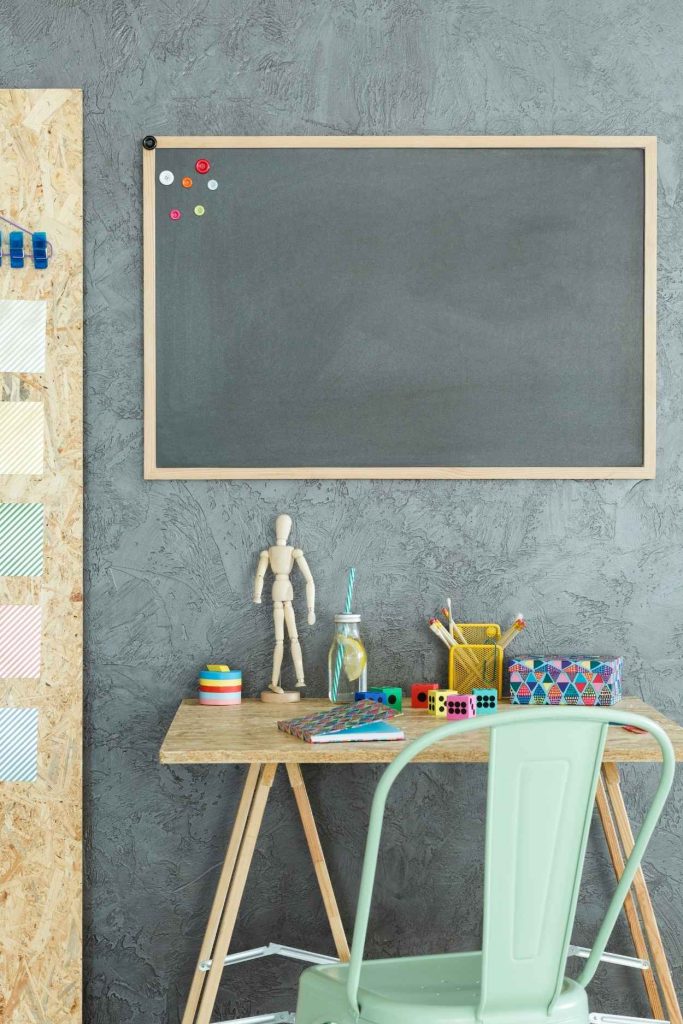
Introduce interactive elements to the walls that engage your child’s senses and encourage play.
- Pro Tip: Install a magnetic wall board for displaying artwork, or set up a pegboard to organize and hang toys or small crafts.
- Expert Thought: Interactive walls like magnetic boards or dry-erase panels can grow with your child.They’ll enjoy creating art or learning activities that help develop skills and creativity.
- Placement Tip: Install interactive walls on lower sections of the wall so your child can easily reach and use them.
- DIY Option: Use magnetic paint on a section of the wall to create a space for kids to stick their drawings, photos, or notes.
11. Under-Bed Storage Drawers
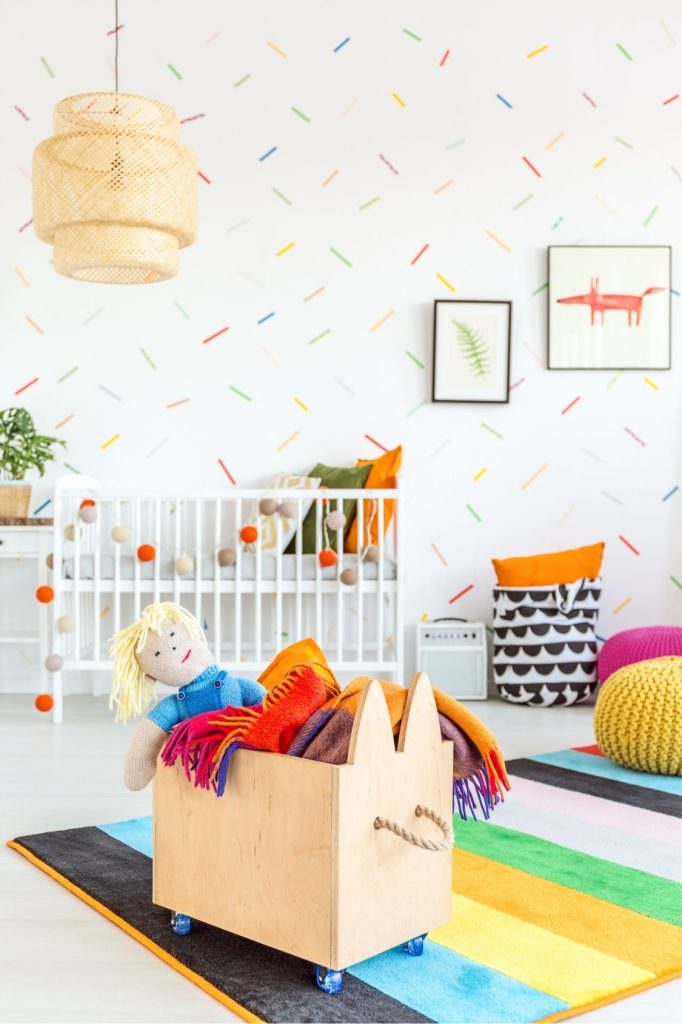
Make use of the space under the bed with custom drawers or storage boxes. This provides an easy-to-hide space for everything from toys to clothing.
- Pro Tip: Choose beds with built-in storage or opt for simple storage bins with wheels that make it easy to pull out and put away.
- Expert Thought: Under-bed storage allows you to keep the room clutter-free, offering a functional way to store seasonal items or toys that aren’t used every day.
- Placement Tip: Ensure the under-bed storage is easy for your child to access, but hidden enough to keep the room looking neat.
- DIY Option: Build your own under-bed drawers using plywood and caster wheels for an affordable and custom storage solution.
12. Personalized Name or Initials Wall Art
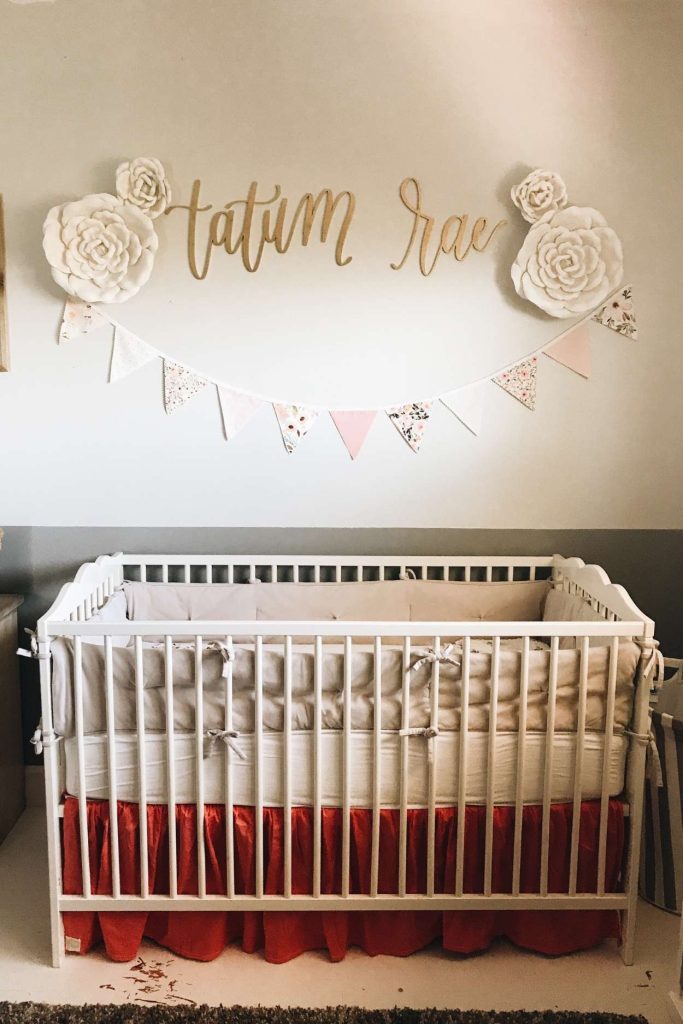
Personalized decor adds a unique touch to your child’s room, making them feel special and connected to their space.
- Pro Tip: Use their name or initials in a fun, creative font or design. This makes the room feel truly theirs.
- Expert Thought: Personalizing the space can be as simple as adding a name plaque, or you can go all out with a mural or large typography that fits into the room’s theme.
- Placement Tip: Place the name art above the bed or on a main wall to ensure it’s visible and becomes a focal point.
- DIY Option: Get creative by using wood, paint, or fabric to craft custom name art yourself.
13. Ceiling Decor to Enhance the Space
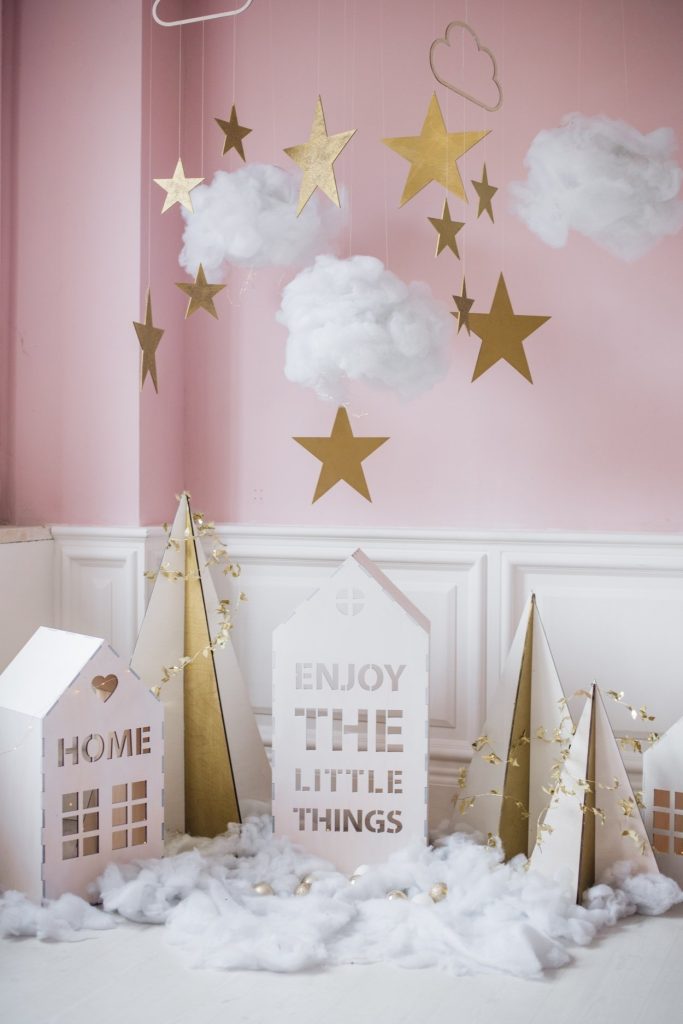
The ceiling is often overlooked, but it can play a huge role in enhancing the room’s design. A little creativity in this area can take the space to the next level.
- Pro Tip: Add a fun, whimsical touch with hanging stars, clouds, or even a moon on the ceiling. This creates a cozy, magical environment for the child to enjoy.
- Expert Thought: Ceiling decorations can be great for calming a room. Consider using soft, dimmable lights or glow-in-the-dark elements for a soothing effect during bedtime.
- Placement Tip: Position any ceiling decor near the bed or play area so your child can look up and feel immersed in their environment.
- DIY Option: Create a simple DIY project with string lights or paper lanterns that can be easily attached to the ceiling.
14. Low Furniture for Easy Access
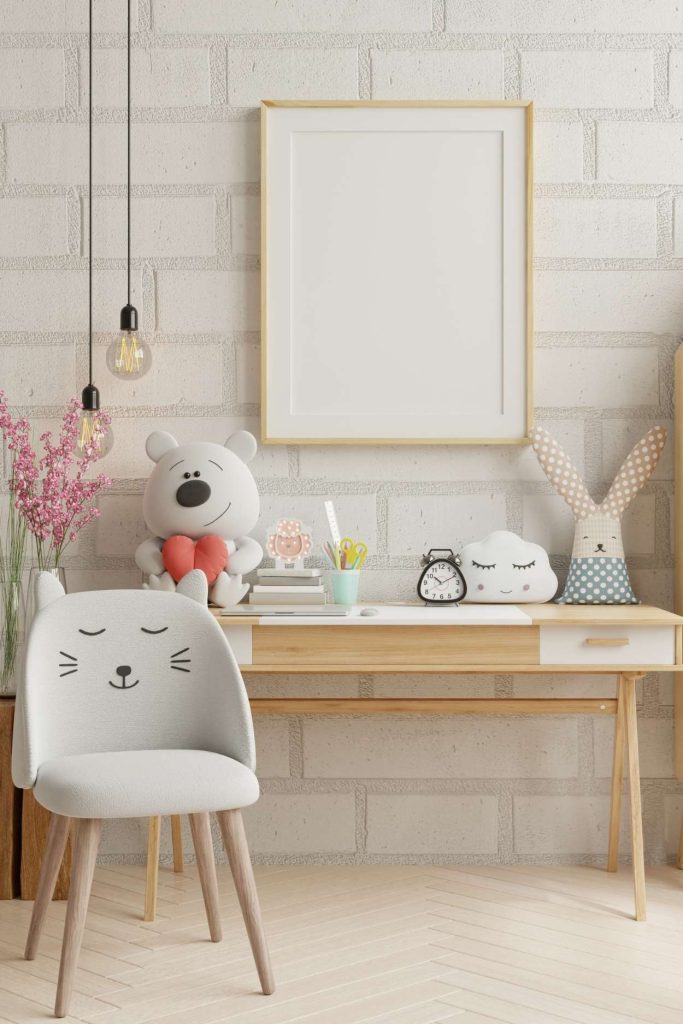
Furniture that’s sized to your child’s scale is crucial for encouraging independence. Low-profile furniture ensures that kids can easily access their belongings without needing constant help.
- Pro Tip: Look for chairs, desks, and shelves that are lower than typical adult furniture. This makes it easier for your child to engage with their space, whether it’s reading at a small table or grabbing their favorite toys from the shelf.
- Expert Thought: Low furniture not only promotes autonomy, but it also helps create a sense of balance and harmony in the room. The space will feel more approachable for children.
- Placement Tip: Arrange the furniture so that the child can easily reach everything, while leaving room for movement and play.
- DIY Option: Convert old adult furniture into low-sitting versions. For example, take an old dresser and trim down the legs to create a lower piece for storing toys.
15. Indoor Climbing Wall for Active Kids
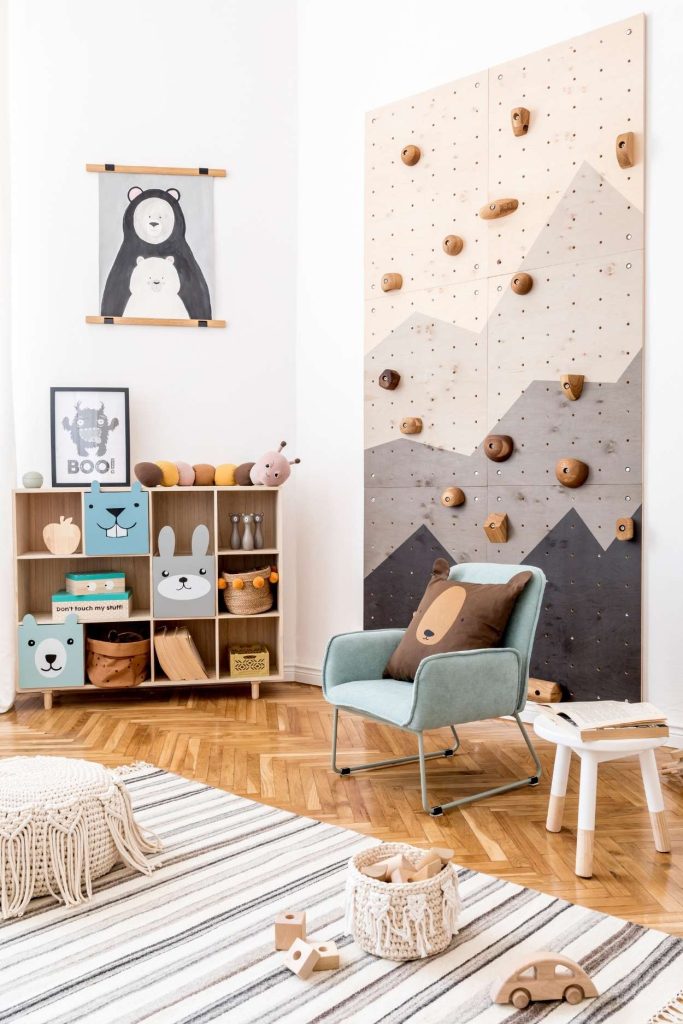
Active kids will love having a dedicated space for climbing and exploring within their own room. A climbing wall is a unique addition that helps develop motor skills and burn off energy.
- Pro Tip: Install a mini climbing wall on one of the walls to give your child an outlet for physical activity without needing to leave the room.
- Expert Thought: A climbing wall adds an element of adventure, making the room feel like an interactive playground. Make sure the wall is equipped with soft padding below for safety.
- Placement Tip: Position the climbing wall in an area with plenty of space around it, ensuring the floor is padded with foam mats or a rug for cushioning.
- DIY Option: Build your own climbing wall using plywood and climbing holds, or even use a simple wooden ladder against the wall for an easy, cost-effective version.
16. Light-Up Furniture for a Fun Twist
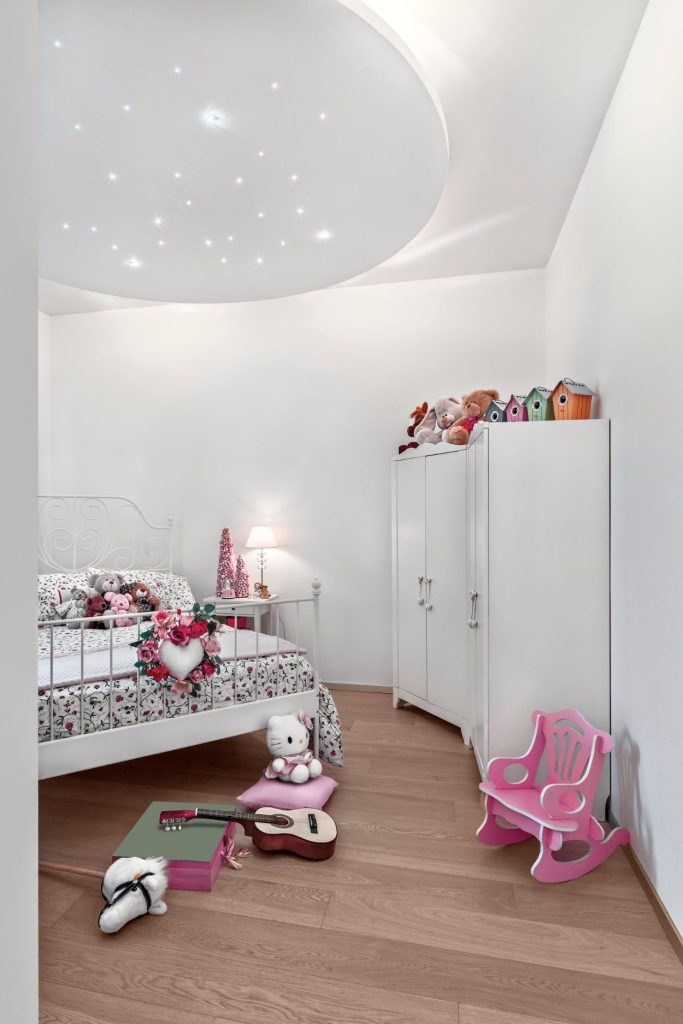
Light-up furniture is a fun, playful addition that adds both a functional and aesthetic element to the room.
- Pro Tip: Look for furniture that incorporates LED lights into its design, like light-up tables or beds with built-in lighting. This adds a soft glow that enhances the mood of the room.
- Expert Thought: Lighting is not only about visibility but also ambiance. Choose soft LED lighting that won’t be too harsh for kids but adds a warm, inviting glow.
- Placement Tip: Use light-up furniture pieces to highlight specific areas, such as a bedside table or desk. This creates an eye-catching focal point.
- DIY Option: Create your own glowing furniture by attaching battery-powered fairy lights underneath tables or shelves.
17. Nature-Inspired Elements for a Calming Ambiance
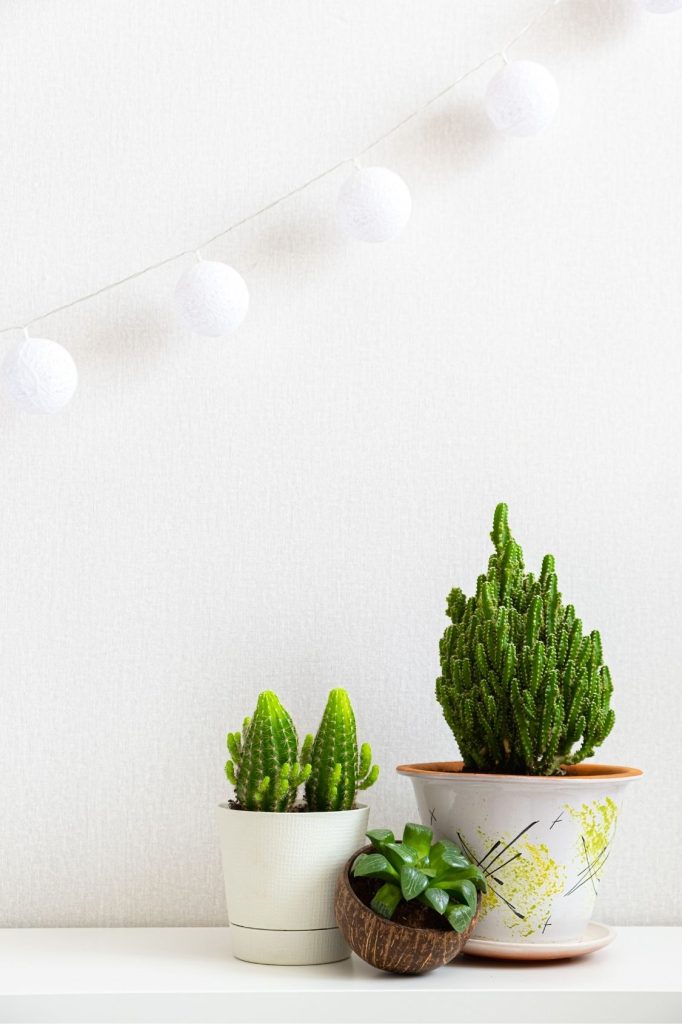
Incorporating natural elements like plants, wood, or natural textiles helps create a calm, grounded space that feels fresh and serene.
- Pro Tip: Introduce houseplants or wood accents to bring nature inside. Low-maintenance plants like succulents or ferns are perfect for kids’ rooms.
- Expert Thought: Natural materials not only look great but can also promote a healthy, soothing environment. Wood and greenery are associated with reducing stress and improving air quality.
- Placement Tip: Place plants on shelves or desks, out of reach for younger children. Consider hanging planters to save space while still bringing in that natural touch.
- DIY Option: Recycle wooden crates or boxes to create plant holders or a unique headboard for the bed.
18. Statement Rugs for Cozy Comfort
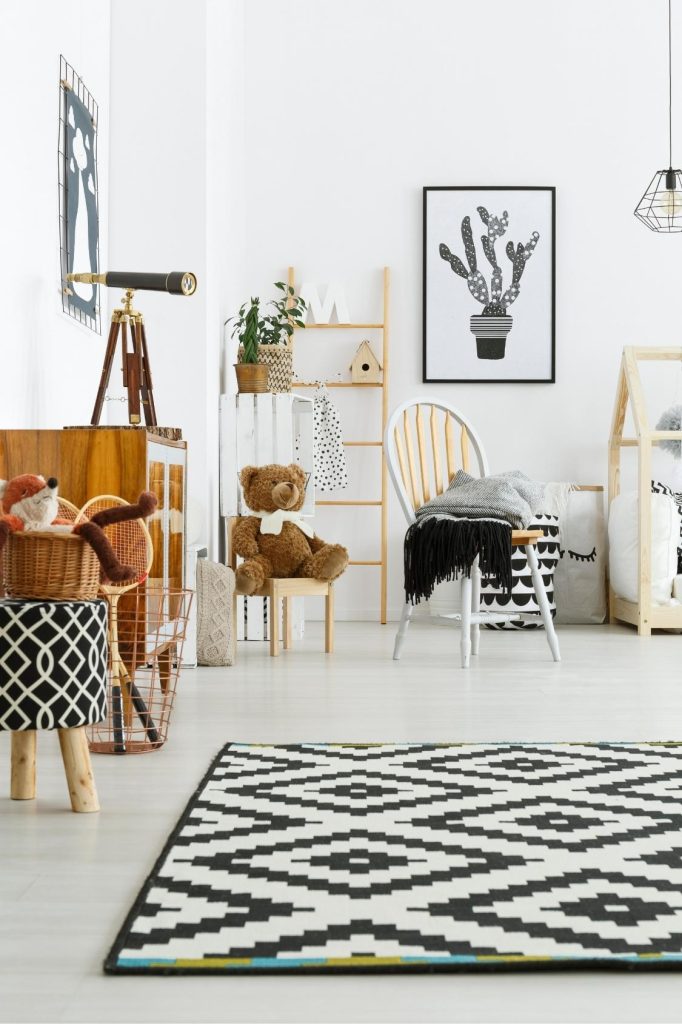
A rug can tie the room together, adding warmth, comfort, and an extra splash of color or texture.
- Pro Tip: Choose rugs with bold patterns or fun textures to create a cozy environment. A playful rug can be a statement piece that adds to the room’s design.
- Expert Thought: Rugs not only make a room more comfortable but also protect flooring. Look for machine-washable options that are easy to maintain.
- Placement Tip: Use rugs to define different areas in the room. For example, place one under the bed to anchor the sleeping area or in front of a bookshelf to create a reading nook.
- DIY Option: Make your own rug with fabric or yarn by following simple tutorials for a fun and affordable DIY project.
19. Colorful Ceiling Lights for Playful Ambiance
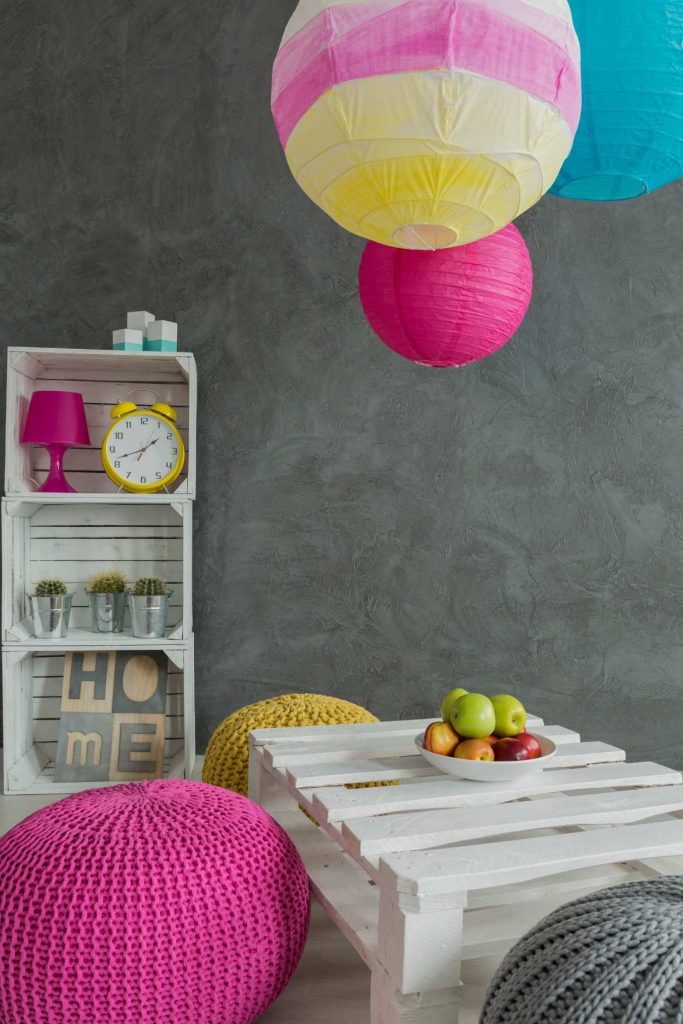
Lighting can set the mood for a room, and ceiling lights that incorporate color or whimsical designs will add a fun touch to any kids’ room.
- Pro Tip: Choose a ceiling light fixture that’s playful and colorful—think starry night themes, balloons, or chandeliers with bright accents. These lights will add a sense of fun and make the room feel magical.
- Expert Thought: Ceiling lights should be both functional and playful. Opt for dimmable lights or those with color-changing features to suit different moods throughout the day.
- Placement Tip: Position the light in the center of the room for an even distribution of light, or hang a decorative lamp over the bed or play area to create a focal point.
- DIY Option: Make your own DIY lampshades using colorful fabrics or paper to create a personalized lighting fixture.
Final Thought: These 19 kids’ room ideas combine the best of minimalist design and fun, functional elements. Whether you’re working with a small space or looking to update your child’s room with playful yet organized decor, these tips will inspire you to create a space that both kids and parents will love. With easy DIY options and expert advice, you’re sure to create a room that feels like a true reflection of your child’s personality!

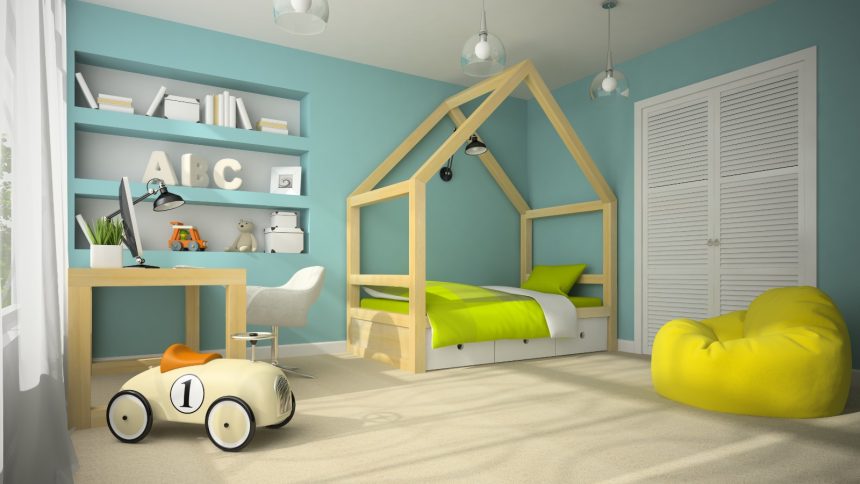
Leave a Reply